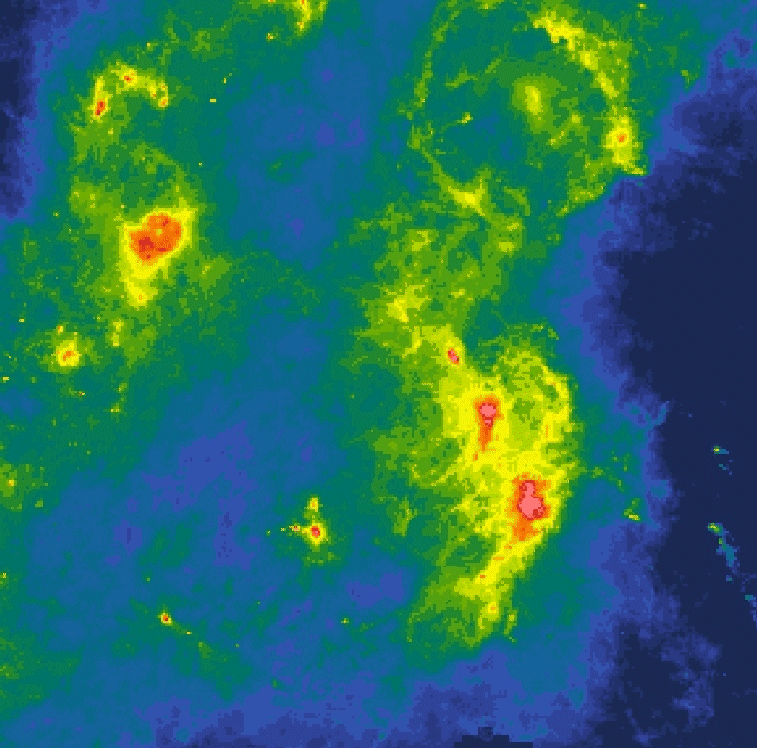 Credits |
The image to the left was created by IRAS, a satellite that studied the sky at infrared wavelengths of light in the early 1980's .
The false colors in the image represent the quantity and temperature of interstellar dust toward Orion. The more dust or the hotter the dust, the redder the color. Stars do not shine brightly in the infrared and don't appear in this image. However, many of the nebulae in the optical image also glow in the infrared. This is because the interstellar medium contains not only gas but also dust. Star formation has a good chance of starting only in regions where there is a lot of dust. Thus, studying interstellar dust is important in understanding how stars form.
|

